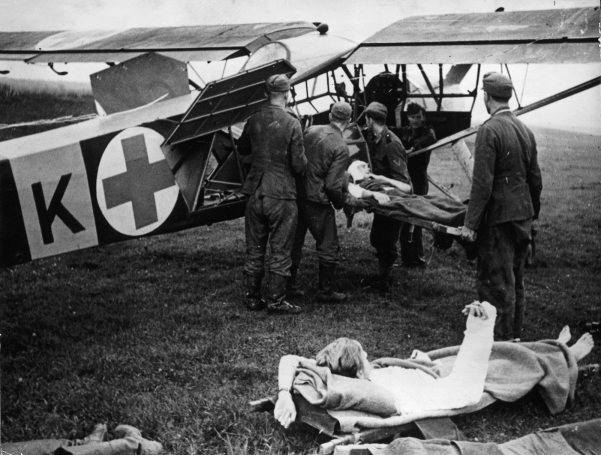
The Fieseler Fi 156 Storch (Stork) was designed in response to a 1935 requirement issued by the Luftfahrtministerium for an army cooperation, casualty evacuation and liaison aeroplane. In prototype form it first flew in the spring of 1936 and entered service the following year. The ungainly but highly effective “Stork” was one of the most remarkable aircraft produced by the German aero industry during the Nazi regime. By incorporating innovative high-lift devices that he pioneered on pre-war acrobatic types, Gerhard Fieseler produced an aircraft with outstanding capability. This is borne out by some remarkable statistics: the Fi 156 Storch could take-off in 65m (213ft), land in 20m (66ft) and virtually hover in a 40km/h (25mph) wind without any loss of control.
Hitler’s personal pilot used the exceptional STOL capability to land on an Alpine hotel terrace during the daring mountainside rescue of Benito Mussolini. Production totalled about 2900 aircraft, and the main variants were the initial, unarmed Fi 156A model, Fi-156C armed model in four main sub-variants, and Fi 156D air ambulance model in two sub-variants. The aircraft was held in high regard on both sides; at least three Allied generals are known to have used captured aircraft as their personal transportation.
Specifications
- Manufacturer
- Gerhard Fieseler Werke
- Type
- Communications
- Length
- 9.90m (32ft 5.75in)
- Span
- 14.25m (46ft 9in)
- Height
- 3.05m (10ft)
- Maximum Speed
- 175km/h (109mph)
- Service Ceiling
- 5200m (17,060ft )
- Range
- 1015km (631 miles)
- Crew
- One
- Powerplant
- 1 x Argus inverted-Vee
- Armament
- 1 x 7.92mm MG
- Bomb Load
- Not Available
- First Flight
- March 1936
- Initial Climb
- 286m (937ft) per min
- Weight (empty)
- 940kg (2072lb)
- Weight (loaded)
- 1320kg (2910lb)
